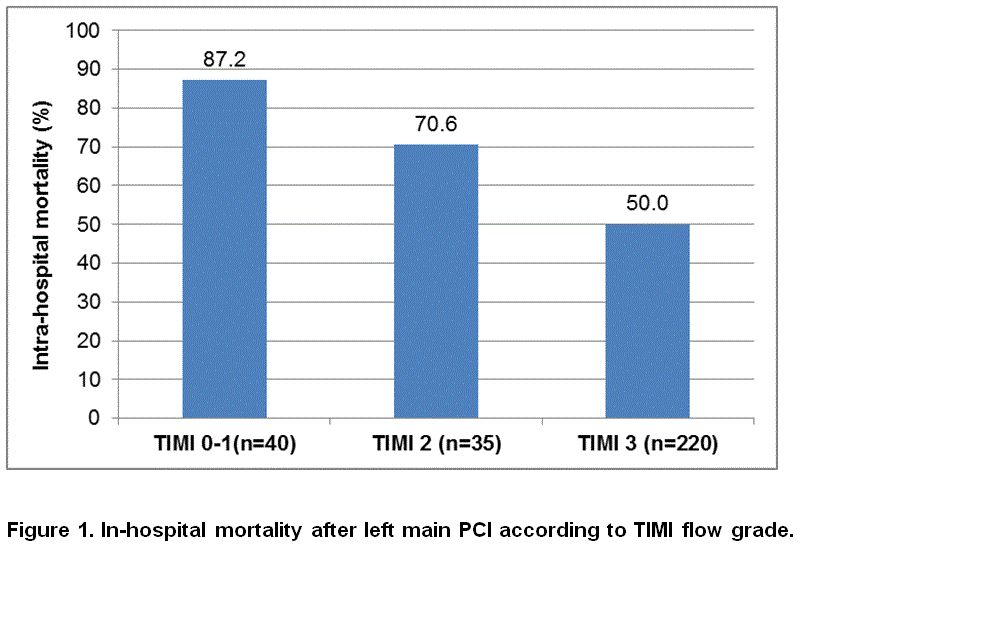
Outcomes after left main percutaneous coronary intervention in patients with acute myocardial infarction complicated by cardiogenic shock.
Results of the prospective ALKK-PCI-Registry
2Institut für Herzinfarktforschung Ludwigshafen, IHF, Germany
3Herzzentrum, Universitätsklinik, Leipzig, Germany
4Vivantes-Klinikum Neukölln, Berlin, Germany
5Humboldklinikum, Berlin, Germany
6Westpfalz-Klinikum Kaiserslautern, Kaiserslautern, Germany
7Vivantes-Klinikum am Urban, Berlin, Germany
Introduction: The use of early revascularization therapy with percutaneous coronary intervention (PCI) has been shown to improve outcome in patients with acute myocardial infarction (AMI) complicated by cardiogenic shock (CS). Little is known about the impact of PCI of the left main stem on procedural and clinical outcomes in patients with CS.
Methods: Data from consecutive patients with AMI and CS treated with PCI enrolled into the prospective ALKK-PCI registry were centrally collected and analyzed. Patients were divided into four groups with PCI for left main, single vessel disease, two vessel disease und three vessel disease. Patients’ characteristics, procedural features, antithrombotic therapies and in-hospital complications were compared between the four groups.
Results: Between 2010 and 2015 a total of 2352 consecutive patients with AMI and CS were treated by PCI in 51 hospitals, 299 for left main (19 for protected, 280 for unprotected) and single-vessel (n=491), two-vessel (n=524) and three-vessel disease (n=1038). Thrombolysis In Myocardial Infarction (TIMI) 3 patency after PCI was 84.3%, 84.0%,80,8% and 84.6% in single vessel, two vessel, three vessel disease and left main PCI, respectively, while in-hospital mortality was 27.9%, 33.9%, 46.5% and 55.9%. Bleeding rates were low (2.0 - 2.3 %) and not different between groups. In the multivariate analysis higher age, TIMI flow < 3 after PCI, 3-vessel disease and left main PCI were independent predictors of mortality.
Conclusion: PCI of the left main is performed in about 12.5 % patients with AMI and CS is associated with a high procedural success rate, while mortality is increased with left main PCI. Since mortality in patients with CS and left main disease without revascularization therapy is very high it seems justified to perform PCI in these patients to substantially reduce mortality.

Powered by Eventact EMS